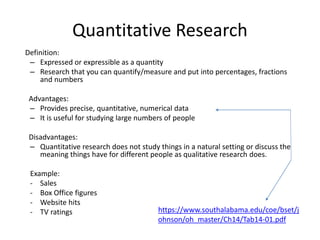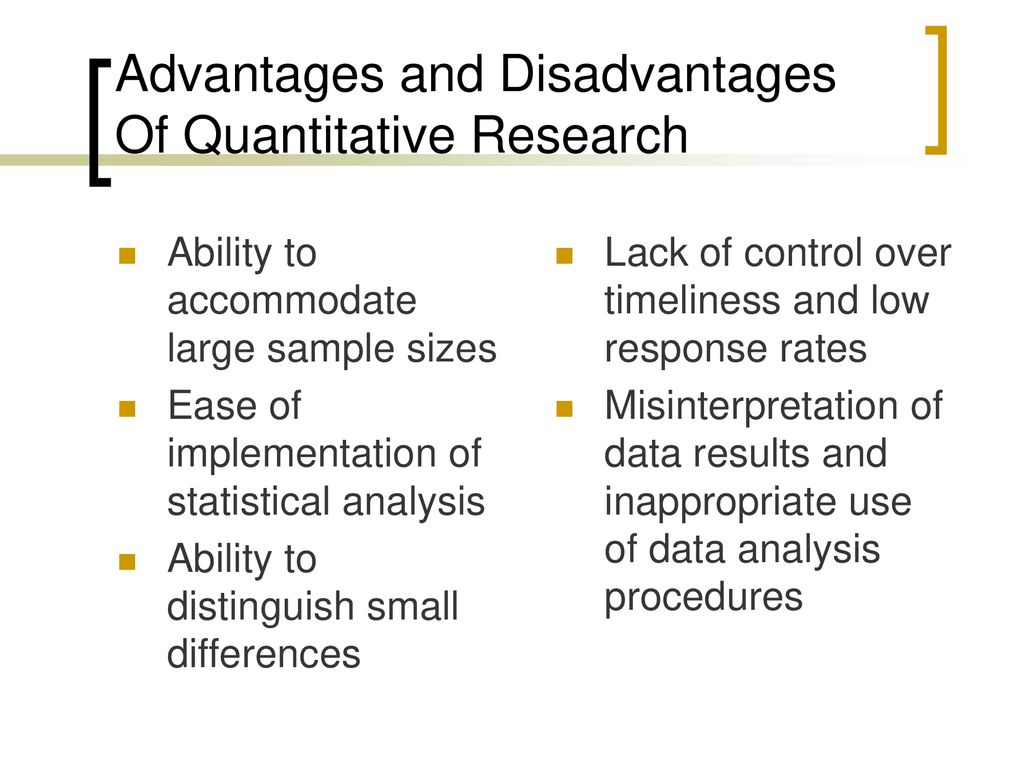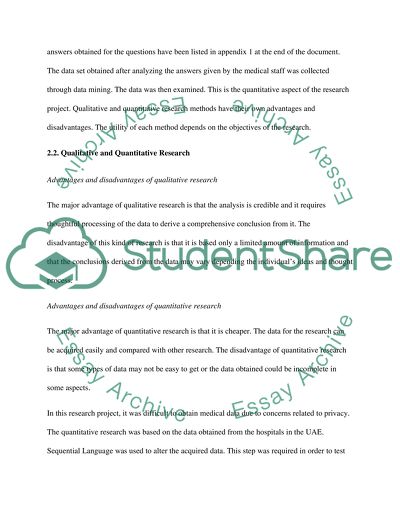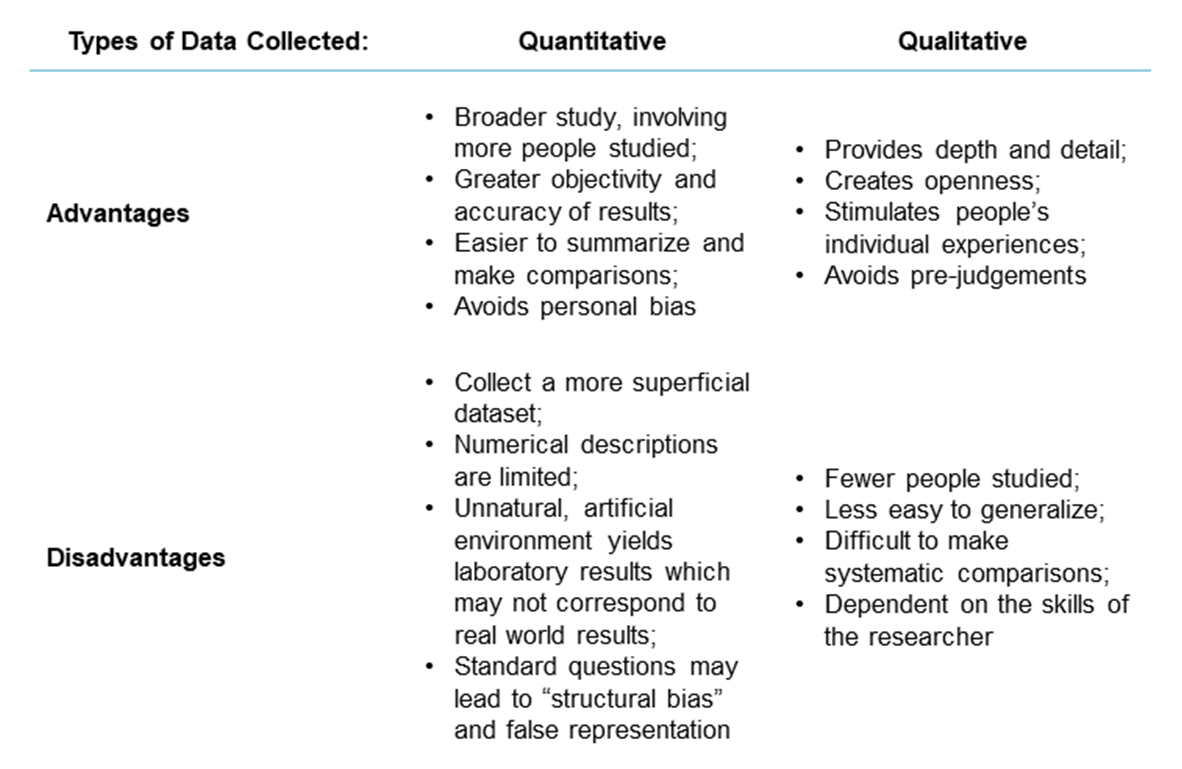Quantitative research is a method of collecting, analyzing, and interpreting data that involves the use of numbers and statistical techniques. It is often used in the social and behavioral sciences, as well as in the natural and physical sciences. There are several advantages and disadvantages to using quantitative research methods.
One advantage of quantitative research is that it allows for the collection of large amounts of data from a large number of participants. This is particularly useful when studying a phenomenon that occurs infrequently or when studying a population that is difficult to access. By collecting data from a large number of participants, researchers can be confident that their results are representative of the population being studied.
Another advantage of quantitative research is that it allows for the use of statistical techniques to analyze the data. These techniques can help researchers identify patterns and trends in the data that may not be immediately apparent to the naked eye. This can be particularly useful when examining complex relationships between variables.
However, there are also several disadvantages to using quantitative research methods. One disadvantage is that the use of statistical techniques can make the research findings difficult for non-experts to understand. In addition, quantitative research relies on the use of standardized measures, which may not be sensitive enough to capture the complexity of human behavior. This can lead to a lack of depth and nuance in the research findings.
Another disadvantage of quantitative research is that it is often focused on hypothesis testing, rather than exploration. This can limit the scope of the research and prevent researchers from discovering new and unexpected findings. In addition, because quantitative research relies on statistical techniques, it is vulnerable to errors and biases in the data collection process, which can compromise the validity of the research findings.
In conclusion, while quantitative research has several advantages, including the ability to collect large amounts of data and use statistical techniques to analyze it, it also has several disadvantages, including the potential for a lack of depth and nuance in the research findings and the risk of errors and biases in the data collection process.







